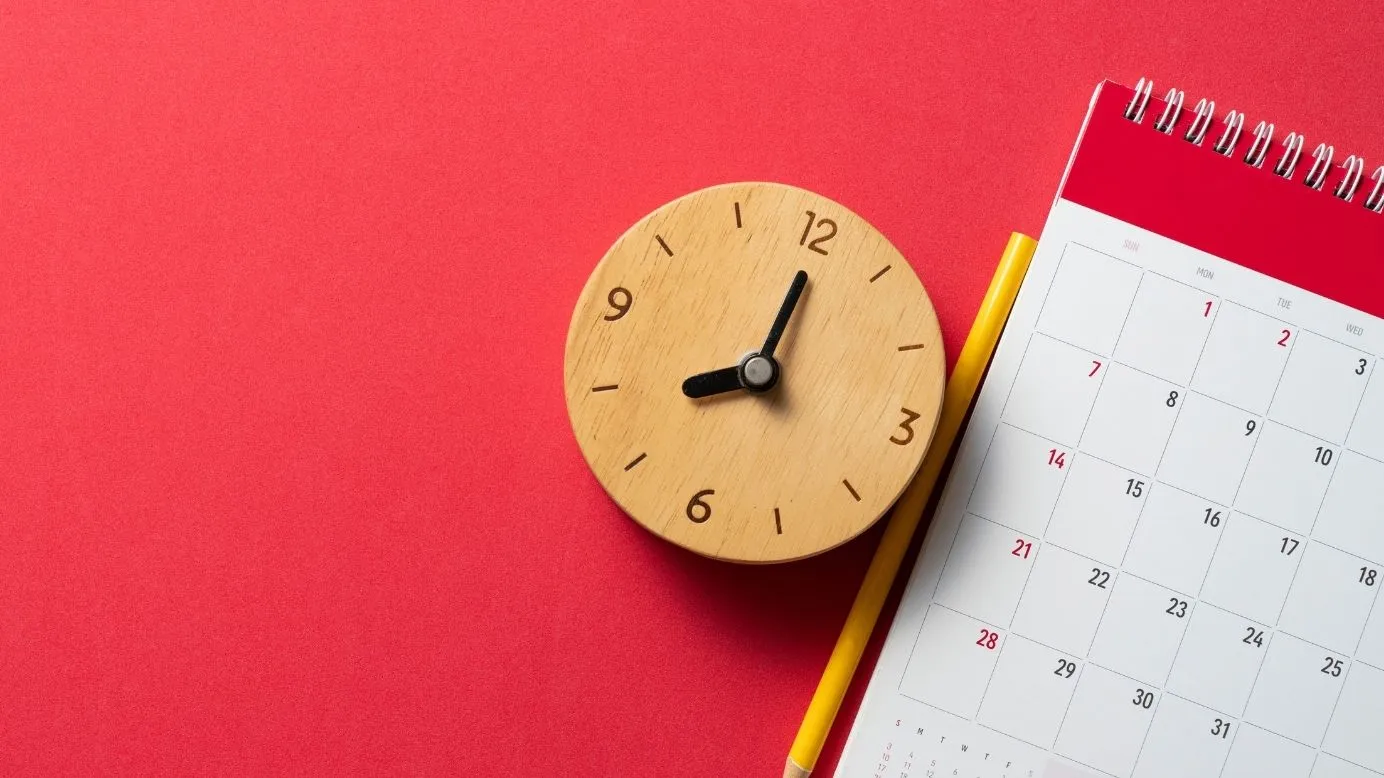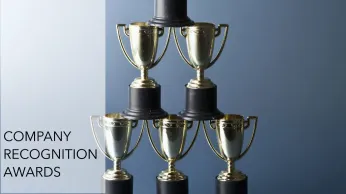Masa untuk Mula Merancang Program Ganjaran dan Pengiktirafan Pekerja anda
Mereka berkata, pukul semasa seterika panas. Tetapi bilakah masa yang sesuai untuk melancarkan program ganjaran dan pengiktirafan pekerja anda? Strategi yang dirancang dengan baik ini memastikan pelancaran yang berjaya dan penyertaan aktif, menjadikan pengiktirafan sebagai sebahagian daripada budaya tempat kerja anda yang lancar.
Pada halaman ini
Bilakah masa yang sesuai untuk memulakan pelan R&R pekerja anda?
Mari kita mulakan dengan memberitahu anda apabila tidak 'memulakan' perancangan untuk program R&R pekerja anda:
- Apabila pekerja anda sudah terlepas.
- Apabila anggur pejabat berdengung dengan murmur rasa tidak puas hati.
- Apabila syarikat kehilangan wang!
Ambil General Motors, sebagai contoh.
Dalam skandal penarikan balik General Motors 2014 di mana Ketua Pegawai Eksekutif GM Mary Barra terpaksa hadir di hadapan Kongres untuk menjawab kegagalan syarikat untuk menarik balik kereta yang rosak yang membawa kepada 13 kematian, apa yang muncul sebagai salah satu punca asas adalah proses ganjaran dan hukuman yang cacat syarikat.
GM’s environment discouraged individuals (employees) from voicing their concerns instead of rewarding them for being conscientious. Post this, the company’s rewards and recognition program underwent a complete revamp but not before the damage had been done!
Your employee rewards and recognition program must be embedded into the fabric of your company’s culture right from the time it is envisioned.
87% pekerja melaporkan tahap kemasukan yang tinggi di syarikat mereka apabila terdapat budaya pengiktirafan yang kukuh. Forbes
Tetapi terdapat beberapa langkah yang perlu diambil sebelum rancangan anda berubah daripada lakaran pada papan lukisan pepatah kepada realiti kerja.
When to start planning employee rewards and recognition program: A chronology of events
If this is your company’s first-time implementing a employee rewards and recognition program, planning it might seem like an uphill task.
Ini berlaku apabila program ganjaran dikejarkan tanpa pemikiran dan perancangan yang teliti. Anda dikuasakan oleh semangat dan semangat untuk melakukan perkara yang betul oleh pekerja anda tetapi jangan melompat ke depan tanpa rancangan!
Dari hari anda membayangkan program ini sehingga pelancaran sebenar, pelan tindakan yang disusun dengan baik dan berhati-hati akan memastikan kejayaan yang lebih besar dari segi pelancaran dan penyertaan.

1. Pelan 6 bulan
- Sebaik sahaja anda telah menyelaraskan organisasi kepada idea program R&R, pastikan anda menetapkan rancangan anda bergerak sekurang-kurangnya setahun lebih awal daripada pelancaran sebenar.
- Mulakan dengan matlamat yang ingin anda capai. Menilai objektif perniagaan anda, keperluan pekerja anda, dan bagaimana untuk mencapainya dengan jayanya.
- Sediakan anggaran kasar garis masa dan terus menyemaknya untuk memastikan pelancaran berada di landasan yang betul.
- Pada bulan-bulan berikutnya, kumpulkan pasukan yang tepat untuk membantu anda menyelidik, melaksanakan, dan melaksanakan program ini.
- Penyelidikan mengenai platform atau penyedia pengiktirafan pekerja yang berbeza. Lihatlah insentif, faedah, dan pilihan ganjaran yang mereka tawarkan. Pastikan semuanya sejajar dengan objektif perniagaan anda secara keseluruhan.
2. Pencapaian 4 bulan
- Pada tanda 4 bulan, sudah tiba masanya untuk menghubungi penyedia yang berbeza untuk sebut harga. Ambil panggilan dalaman mengenai logistik program.
- Beberapa faktor memainkan peranan penting dalam menilai penyedia atau platform R&R&, termasuk yuran pelesenan, pemilihan ciri, dan tahap penyesuaian.
- Pada masa yang sama, adalah penting untuk menetapkan belanjawan dan memilih kategori ganjaran dalam belanjawan tersebut.
- Buat senarai KPI yang boleh membantu anda mengukur kejayaan program. Senaraikan matlamat pekerja anda dan tetapkan kategori ganjaran untuk membantu pekerja anda sejajar dengan matlamat tersebut dan memenuhi keperluan mereka.
- Sebaik sahaja anda menetapkan kriteria, gunakan beberapa bulan akan datang untuk analisis perbandingan penyedia / platform berdasarkan sampel, demo, testimoni, rujukan, dan harga untuk membantu anda membuat pilihan yang tepat.
- Tentukan skop dan julat program. Adakah ia akan menjadi seluruh syarikat? Atau adakah ia akan disasarkan di lokasi atau jabatan tertentu? Apakah ganjaran tertinggi dan terendah?
3. Tanda 2 bulan
- Dengan hanya tinggal dua bulan lagi, sudah tiba masanya untuk turun ke pelaksanaan sebenar. Selesaikan pembekal / platform berdasarkan penilaian anda dan kongsi senarai KPI yang ingin anda masukkan ke dalam program bersama-sama dengan metrik yang boleh diukur.
- Menyediakan senarai matlamat program, kategori ganjaran, dan nilai, butiran penjenamaan, garis panduan, senarai pekerja, keperluan pelaporan, dll. Rundingan terperinci dengan pembekal anda akan membantu mempersiapkan dan mengoptimumkan platform untuk pelancaran awal anda.
- Memuktamadkan pelan belanjawan dan komunikasi untuk pelancaran. Kemudian sudah tiba masanya untuk memasarkan program anda kepada pekerja menggunakan strategi serampang 2 mata yang bertujuan untuk pelancaran itu sendiri dan faedah program.
4. 1 bulan sebelum pelancaran
- Dengan tanda 1 bulan, platform anda harus bersedia dan bersedia untuk pratonton. HR dan eksekutif kanan syarikat harus mengikuti program ini, menguji setiap ciri dan fungsi untuk memastikan platform siap sepenuhnya sebelum ia disiarkan.
- Luangkan masa untuk menguji pautan. Cari pepijat dalam sistem, semak ciri tersuai dan pastikan talian komunikasi yang jelas dengan pembekal anda untuk membuat pelarasan akhir. Anda mungkin mahu menggunakan penjejak pepijat untuk menjimatkan masa anda dengan tugas ini
- Mulakan komunikasi pelancaran anda ke takuk dan gunakan pendekatan berbilang saluran. Manfaatkan e-mel, kempen, poster, mesyuarat dewan bandaran, pop timbul intranet untuk menarik minat pekerja dan mempamerkan nilai program.
5. 2 minggu untuk pergi
- Ini masa yang sukar! Dengan hanya dua minggu untuk pergi, platform anda sepatutnya kini beroperasi dan berjalan.
- Tetapkan titik sentuh biasa dengan pembekal anda untuk memperhalusi platform dan mengesahkan data program (termasuk butiran pekerja).
- Mula melatih pasukan HR dan pengurus peringkat pertengahan anda, gunakan paket Soal Jawab untuk membiasakannya dengan alat dan pelaporannya.
- Mengadakan mesyuarat pihak berkepentingan biasa untuk mengatasi sebarang kedutan saat-saat akhir.
- Teruskan memberi pekerja anda menyelinap ke dalam program ini dengan pratonton ganjaran, butiran tentang bagaimana untuk mencapai matlamat, dan faedah program untuk pembangunan profesional dan peribadi mereka.
6. 1 hari lagi
- Sehari sebelum pelancaran biasanya subuh dengan ketegangan menggigit kuku. Sudah tiba masanya untuk melakukan pemeriksaan akhir dengan penyedia platform anda untuk memastikan semuanya sudah siap!
- Tetapkan satu siri acara pra-pelancaran untuk menguatkan jangkaan. Anda boleh mengadakan parti pra-pelancaran, beberapa permainan pembinaan pasukan, luar tapak, atau mungkin apa-apa untuk menunjukkan kepada pekerja anda ia adalah program ganjaran untuk pekerja.
7. Launch day
- Tahniah! Semasa anda mengumumkan program anda dengan pesta pelancaran besar atau dewan bandar, sudah tiba masanya untuk mendedahkan sepenuhnya dan ciri-cirinya.
- Pantau interaksi dan reaksi awal, mengadakan sesi Soal Jawab yang luas untuk memberi jaminan kepada pekerja anda tentang kelebihan dan faedahnya.
- Pada hari-hari berikutnya, sediakan pasukan program anda untuk menjawab banjir soalan, yang lebih cenderung datang, kerana pekerja anda mula menggunakan platform. Semak platform dan alat secara berkala untuk mengikuti perubahan.
Employee rewards and recognition program success for companies that timed it right
Though the timelines mentioned above can be taken as an average, companies that have seen remarkable success in their R&R initiatives have not only factored in size and market standing but also changed employee needs.
To put it simply, these companies have taken an agile approach to R&R, planning or adapting their program according to the needs of the hour.
Mengambil syarikat-syarikat seperti contoh R&R yang dilakukan dengan betul, anda boleh menganggarkan masa yang sesuai untuk syarikat anda merancang program R&R pekerjanya berdasarkan kriteria berikut:
Benamkan program R&R anda ke dalam asas budaya syarikat dari awal lagi dan anda mungkin akan berjaya ke senarai Tempat Kerja Terbaik seterusnya!
Jika anda sebuah syarikat yang mantap, anda harus merancang portfolio ganjaran dinamik yang mengambil kira keutamaan pekerja anda dan boleh menyesuaikan diri dengan perubahan berdasarkan maklum balas masa nyata.
Simplus, rakan kongsi Salesforce permulaan dan penyedia CPQ , yang ditubuhkan pada tahun 2014, telah berjaya ke Tempat Kerja Terbaik 2021 Glassdoor dan beberapa senarai serupa di samping nama mantap seperti Google, Microsoft, dll.
Dalam kata-kata pekerja syarikat, kejayaan ini boleh dikaitkan dengan dasar R&R mereka.
Apabila seorang pekerja yang sangat produktif di Simplus mengumumkan keputusannya secara tiba-tiba untuk meletak jawatan menyatakan keletihan, syarikat itu tidak duduk. Mereka segera menawarkan cuti sebulan, di bawah program R&R mereka, selepas itu dia kembali diberi nafas baru dan berprestasi tinggi.
Sekiranya syarikat itu mengabaikan pekerja atau menunggu untuk melaksanakan program R&Rnya, hasilnya mungkin agak berbeza.
'Bainie tidak pernah membiarkan Bainie lain gagal,' - moto ini yang diterima pakai oleh pekerja syarikat perundingan pengurusan yang berpangkalan di Boston Bain dan Syarikat yang ditubuhkan pada tahun 1973, juga ditunjukkan dalam program R&R yang berpusatkan pekerja mereka, memperoleh syarikat tempat # 1 di Senarai Tempat Kerja Terbaik 2021 Glassdoor!
"Bain & Co. benar-benar menjaga rakyatnya" - ulasan seperti ini di Glassdoor cukup untuk menunjukkan bahawa syarikat itu benar-benar melabur dalam tenaga kerjanya dan memberi ganjaran kepada mereka dengan sewajarnya.
96% pekerja bersetuju bahawa mereka akan mengesyorkan syarikat itu kepada rakan-rakan mereka! Positif ini ditunjukkan dalam keuntungan syarikat.
Laporan baru-baru ini menunjukkan bahawa cawangan syarikat di UK mencatatkan pertumbuhan 7% diterjemahkan ke dalam peningkatan pendapatan kira-kira £ 10m.
Sesetengah syarikat mungkin memilih untuk menunggu sementara yang lain mungkin bermula pada skala yang lebih kecil dengan peruntukan untuk pengembangan selaras dengan pertumbuhan syarikat.
Sebagai perniagaan kecil, anda boleh melancarkan versi asas program dan meningkatkan apabila peluang timbul.
Oleh kerana pertumbuhan perniagaan anda bergantung kepada produktiviti pekerja anda, anda mesti melancarkan program anda paling awal untuk menarik dan mengekalkan bakat terbaik dalam industri anda.
Sekiranya anda tidak mempunyai program yang komprehensif, inilah masanya untuk merancang dan merombak inisiatif R&R anda untuk mencapai kejayaan perniagaan yang lebih besar.
Program ganjaran yang baik bukan sahaja akan menarik dan mengekalkan bakat tetapi juga akan meningkatkan produktiviti pekerja anda dan meningkatkan kepuasan pekerja secara keseluruhan.
Contoh klasik sebuah syarikat kecil yang telah berjaya ke senarai 100 Tempat Kerja Kecil Terbaik Fortune, The Educe Group, peneraju dalam Perkhidmatan Pengurusan Bakat mahir mengiktiraf dan memberi ganjaran kepada potensi pekerjanya.
Dengan penarafan 5 bintang di Glassdoor, syarikat ini memandang serius R&Rnya. Campuran bonus yang sihat, faedah yang dibayar oleh majikan, dan keseimbangan kerja-kehidupan membentuk teras program R&Rnya.
Contoh klasik pertumbuhan pesat dari permulaan hingga saiz pertengahan, kemajuan Airbnb boleh dikaitkan secara meluas dengan program R&R yang diubah suai yang mengalihkan tumpuan daripada dasar HR kepada sumbangan individu dan pengalaman yang disesuaikan untuk pekerjanya.
Betapa popularnya ini menjadikan syarikat itu? Statistik dari rujukan dan data pekerjaan menunjukkan bahawa, pada tahun tertentu, syarikat itu menerima 180,000 CV untuk 900 kekosongan!
Masa adalah wang!
Time is of the essence when planning your employee rewards and recognition program. Though it's an exciting journey from vision to go live, it doesn't end there. The most crucial part comes post-launch, when it is time to monitor the adoption, usage, progress, and participation rates and tweak the program to make it the best possible gift to your employees and your business.
Anda akan mencapai objektif perniagaan yang dikehendaki untuk mengekalkan tenaga kerja mahir anda, mengupah bakat baru, dan mempercepatkan pertumbuhan perniagaan.












